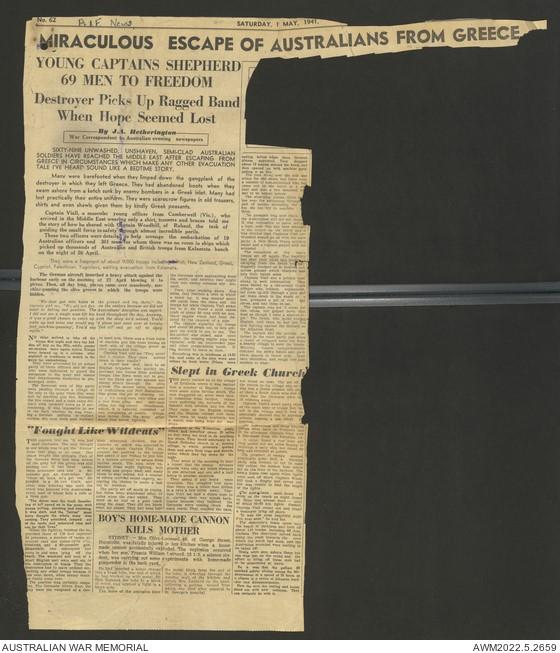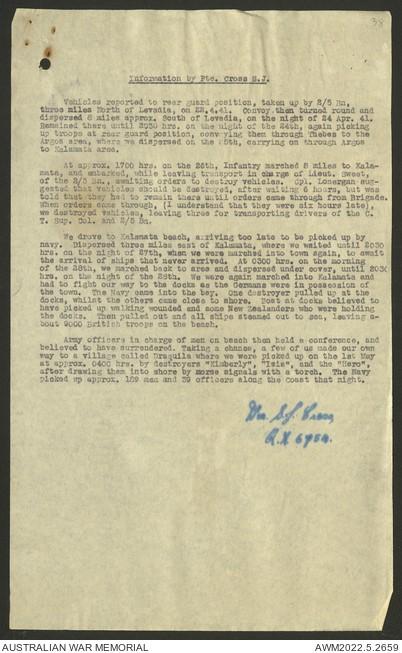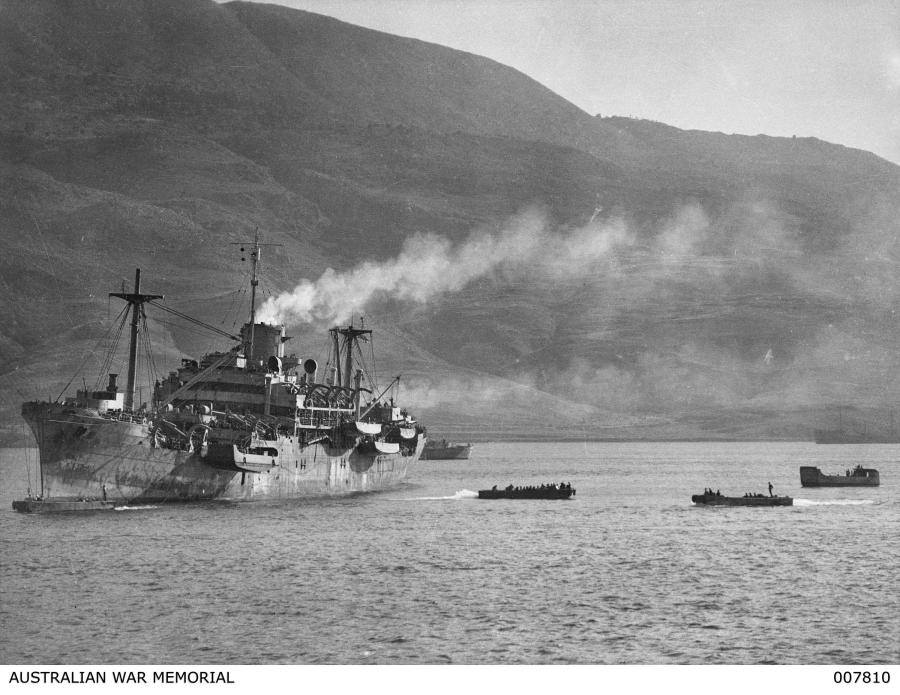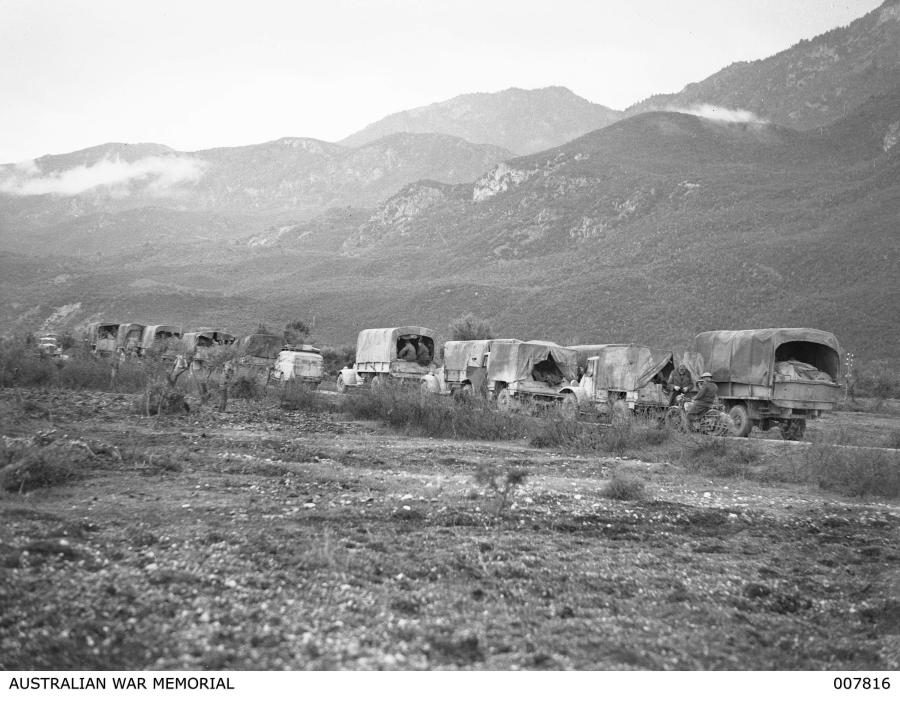Coolness Under Fire: Driver Cross and the Greek Campaign
When Stephen Cross enlisted in the Australian Imperial Force in June 1940, he likely thought his experience as a transport driver would be useful, but not life-saving. Embarking for Greece in April 1941, Driver Cross saw his first battlefield action, earnt a Distinguished Conduct Medal, and had a narrow escape during the evacuation of Greece, all in one month.
Cross was part of 1 Australian Corps Troops Supply Column of the Australian Army Service Corps (AASC), tasked with troop movements across the Mediterranean and Middle East and seeing service in Palestine, Egypt, Libya, Greece and Syria. In the first week of January 1942, the unit travelled almost 60,000 km during more than 1,000 trips, using almost 12,000 litres of petrol.
Driver Cross was transporting the 2/3rd Battalion near Larissa in central Greece when it came under air-attack on 17 April. Lieutenant George William Gibbins of the 2/3rd Infantry Battalion later reported, “Driver Cross drove down, still under fire, and volunteered to help load the truck with ammunition from a deserted ammunition dump.” He then returned, taking up “a position with us as a rifleman”.
The situation worsened when tanks and armoured vehicles approached from behind a smoke screen. Gibbins, who thought the situation hopeless, went on to describe how “Driver Cross sized the situation up in a flash and by superb driving and coolness literally forces the truck out between two Bren carriers and over a portion of stone wall thus gaining a very valuable lead on the tanks who by now had got our range and were pouring 2 lb. shells all around us.”
As the skirmish stretched into the night, Cross swapped between transport and combat duties. When his vehicle was targeted by enemy fire, Cross stopped assisting a field patrol unit, and “going to what looked like certain suicide, dodged back to the truck and moved it ... and by so doing, saved our means of transport and by so doing undoubtedly saved 16 mens’ lives from certain massacre.”
Over the following days, the men made their way south through Greece. The evacuation of the mainland was declared on 24 April when it became clear that German forces could not be repulsed.
Cross and other drivers transported the retreating troops from Thebes to Argos, then on to Kalamata for evacuation. Although anxious for their own safety they did not want their vehicles to fall into enemy hands and held out for an order to destroy them, which arrived six hours late. By the time Cross and his comrades made their way to Kalamata beach, the evacuation ships had departed.
The group desperately returned over successive nights for ships that never arrived. With rations running low, the men hid in olive groves and ditches, narrowly avoiding detection and air-assaults with assistance from the local Greek people.
Spotting a ship on 1 May, Cross and his fellow survivors made contact using a torch to communicate in Morse code. Once aboard they travelled to safety.

The AIF News details the “Miraculous Escape of Australians from Greece”, 1 May 1941. AWM2022.5.2569.51
Cross returned to his unit in Palestine on 4 May, giving a “very intelligent and plucky account of his adventures in [the Greek] campaign”. He later received a Distinguished Conduct Medal, and was appointed lance corporal, as “his was the action of a very brave man indeed”.

Driver Cross’s account of his escape from Greece. AWM2022.5.2659.49
As servicemen evacuated from Greece were slowly reunited with their units, the 1 Australian Corps Troops Supply Column recorded on 11 May, “16 men returned unexpectedly from Greece – very please[d] to be back … All seemed very tired and had been subjected to severe bombing on way over.”
Stephen Cross returned to Australia in late March 1942 and married his sweetheart Gladys on 4 July. He later served in New Guinea and was discharged in November 1945. The story of his daring exploits in Greece are recorded in the unit war diaries of the 1 Australian Corps Troops Supply Column.
Second World War unit diaries are being digitised by the Memorial. As they become available, they can be viewed here.


